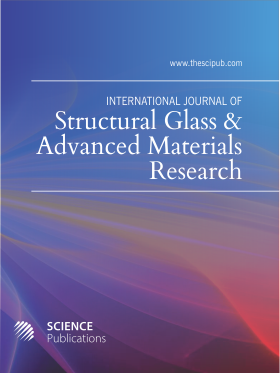Exploratory Study on the Fracture Resistance of Cast Glass
- 1 TU Delft, The Netherlands
Abstract
The emerging interest in the architectural applications of cast glass components reveals a knowledge gap on the mechanical properties of cast glass. Apart from its chemical composition, cast glass is characterized by its manufacturing history and thermal profile, often inheriting a set of defects that define its properties. The role that inhomogeneities in the bulk of voluminous glass components have on the strength of the final product is also uncertain. Systematic testing is therefore necessary for the safe structural application of cast glass. Towards this direction, the presented research aims to experimentally investigate the fracture resistance of cast glass under sharp contact loading, by means of a customized splitting test using a sharp linear indenter. Cubic specimens with 50 mm sides are kiln-cast at low forming temperatures, employing a variety of silicate-based cullet and firing schedules and their inherent defects are documented. The results of the splitting tests show that the borosilicate specimens fail at the highest splitting force, followed by the soda lime float specimens, while the fused or porous specimens have a significantly lower resistance to fracture. The strength order of the various glasses, as this results from the splitting tests- is opposite to that found earlier in four-point bending tests, due to the different fracture mechanisms activated. The fracture resistance of a glass specimen is governed, first by its ability to deform around the indenter to relief the developing stresses and then by its bond strength to resist crack propagation. Thus, a good balance between glass network flexibility and high bond dissociation energy is required, explaining why the tested homogeneous borosilicate and soda lime glasses are more resistant than the modified soda lime compositions with high alkali content. In addition, the fractographic analysis indicates that the non-stress inducing flaws in the bulk have a negligible contribution to the fracture resistance of the specimens.
DOI: https://doi.org/10.3844/sgamrsp.2021.195.225

- 3,927 Views
- 1,662 Downloads
- 4 Citations
Download
Keywords
- Cast Glass
- Fracture Resistance
- Glass Inhomogeneities
- Glass Brittleness
- Crack Initiation and Propagation
